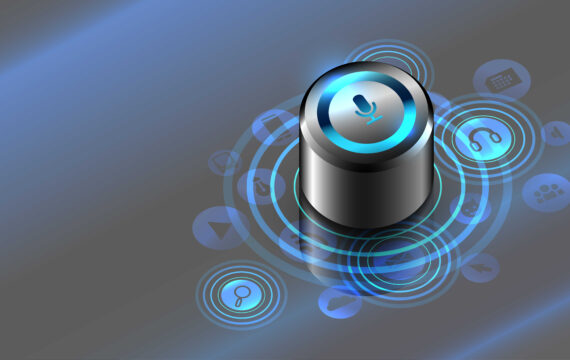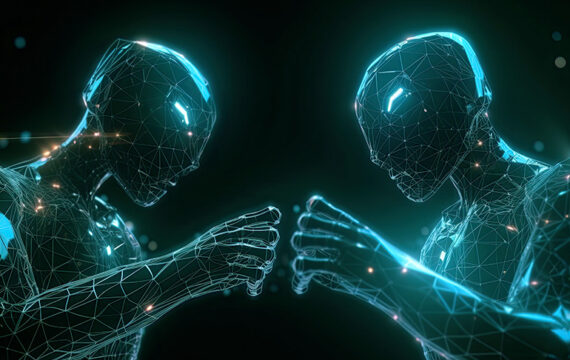If you’ve been looking for the next big thing to crank up the efficiency of your business, you should probably look in the opposite direction. What if the next big thing isn’t big at all? What if it’s a whole swarm of small things working together to achieve greater productivity? From the manufacturing and shipping of goods to the provision of essential public services, the Internet of Things (IoT) has already reshaped the industrial sector, and now its influence is spreading into other areas of our lives. With recent IoT trends producing changes on a global scale, now is the perfect time to adopt smart tech and prepare for the inevitable shift in your business domain.
Key IoT trends you should know

Source — Finances Online
By observing ongoing and newly emerging IoT trends, we can make solid predictions on where this technology will go within the following years. Such trends in IoT as the development of autonomous vehicles, health monitoring systems, and digital twins will change a number of industries, so you must be ready. Smart use of IoT technologies can give you a competitive edge and save you money by allowing you to build software solutions up to 50% faster using cloud IoT accelerators.
Now or never: Prepare for future IoT trends
Future IoT technology trends will help facilities get maximum efficiency and productivity out of their equipment and manufacturing components. This will translate into immense economic value for industries that adopt IoT. The evolution of IoT will bring further improvements in mass personalization, virtual prototyping, cybersecurity, vehicle-to-everything (V2X) connectivity, and healthcare.
Enhanced IoT security for device networks
Whenever new tech arrives, there always are hackers ready to take advantage of its possible weaknesses. IoT is still evolving, and that makes IoT devices fitting targets for hackers. This is exactly why improving the security of connected devices is one of the top IoT technology trends. As of now, IoT professionals are doing this by:
- Ensuring the integrity of multi-device networks
- Enhancing the security of communication channels
- Improving software reliability
- Implementing the security by design approach
Naturally, making IoT networks reliable and secure is a multi-faceted process that goes beyond these practicies. An IoT network might contain sensitive information about a facility, its assets, and employees, so it has to be secure. Security is also a critical issue for smart home systems and voice assistants that collect and store information about users. Cybersecurity is essential for the private sector, large-scale manufacturing, shipping, and public service, which makes it one of the biggest Internet of Things trends.
Edge computing — A reliable way to store your data
We’ve only just gotten used to keeping our data in the cloud, and it’s already time for a change. Simply put, edge computing allows connected devices to share, calculate, analyze, and keep data locally. Edge computing is a kind of hybrid approach to data processing that’s reshaping the future of IoT.
Considering how IoT is spreading into different areas of our lives, we must make sure all connected systems function flawlessly. The need for security will make hybrid data storage especially relevant for sensitive and vital systems like autonomous vehicles and industrial equipment networks where lags can lead to injuries. For instance, whenever an employee enters a restricted or potentially dangerous area, machinery should stop immediately. This is where edge computing comes in. It allows a system to transmit data and make critical decisions fast, making sure the system works fluently and without breakdowns.
Just say it — The age of voice-controlled devices is here
With the ongoing COVID pandemic, we’ve realized that touching things left and right might not be the best idea. This, as well as a matter of general convenience, calls for a shift towards voice-controlled interfaces. From no-touch ATMs to voice control panels at large industrial facilities, voice tech is already changing the way we interact with objects around us.
Of course, voice-controlled devices raise privacy and security concerns. Some of the main apprehensions relate to voice payments and other financial transactions. This takes us back to enhanced IoT security as one of the major IoT trends. IoT systems will become more secure, so today might be the right time to explore new possibilities.
Harness AI and big data for a better customer experience
The times of one-size-fits-all production are gone, as industries now tend to personalize their products to the needs of each particular customer. Hyper personalization gives your products a human touch. Thanks to the use of big data, AI, and machine learning, you can now set new goals, save time and resources, and tap into new sources of revenue. Modern customers expect to receive products that are truly theirs, which makes mass personalization one of the key Internet of Things trends.
AI and IoT to boost personalization

Source – AI Driven Personalization
Use digital twins to predict and prevent system breakdowns
Virtual prototyping technology is not new, and manufacturers have been creating digital models of actual physical objects for decades. However, with the advent of IoT, this tech has gained new applications, saving time and resources. A digital twin is a simulation of a real object or an entire system used for testing, optimization, analysis, and calculations.
Digital twinning can allow for the optimization of manufacturing facilities, construction sites, and workspaces. Digital twins of entire cities including Copenhagen, Melbourne, Zurich, and several others already help governments address urban planning issues. Such simulations will become vital in the future for helping industry leaders and governments predict and prevent possible failures. To create a digital twin, a real-life asset is equipped with sensors that collect and transmit data. Then a computer builds a digital replica of that real-world asset. Operators can then monitor the condition of equipment and run simulations that help them to predict and prevent malfunctions.
Internet of Medical Things — The power to save lives
The development of medicine goes hand in hand with technological progress, and the future of the Internet of Things might bring positive changes to the healthcare industry. With the ongoing COVID-19 pandemic, the entire world has had to reevaluate the importance of remote healthcare. Security and safety are paramount in the clinical environment, and IoT can help by improving monitoring and transmission of patient data. Soon, patients and doctors will not even need to meet in person, which could be extremely useful in times of lockdown. In the near term, IoT trends will have a greater influence on the healthcare industry, with smart medical devices becoming more common. Functions of eHealth devices include the following:
- Monitoring
Devices can monitor your heart rate, blood pressure, and other health markers. - Emergency response
Devices can send you an alarm and recommendations in case of a medical emrgency and/or call you an ambulance. - Fitness assistance
Devices can offer general assistance and advice during physical training. - Reporting
Devices can collect data on your condition and send it to your doctor.
This is just the tip of the iceberg in terms of how new tech will change the way we treat our health. Looking a couple of decades ahead, we can see how nanotech devices might collect data on our conditions, report it to doctors, and even heal us as we go. Though it might sound like something out of a sci-fi movie, this is the future of the Internet of Things, and we need to get ready for it.
Learn more about the future of the Internet of Medical Things from an Intellias case study
V2X connectivity and autonomous driving — Future roads
The development of V2X connectivity is expected to be one of the top IoT trends in 2021, so it might be a good time to look into it. V2X connectivity is essential for the proper functioning of autonomous cars. It allows a vehicle to connect to and collect information from devices and vehicles around it to analyze the situation on the road. Thanks to this technology, cars can predict road situations, select the best route, and drive at the optimal speed to save fuel.
Though autonomous cars are not yet ready for mass use, the Internet of Vehicles will make V2X-controlled cars much safer than human-controlled cars. The greatest challenge for autonomous cars right now is the presence of human-driven cars on the streets. The coexistence of autonomous and traditional vehicles on the roads creates serious security concerns as well as a number of legal ramifications that must be resolved in the near future.
Wrapping up: Step towards the future
A new era of the Internet of Things is coming, and the new decade is sure to bring significant changes in the industrial sector and public services. Starting with the way we collect and store data and ending with the way we drive our cars, IoT will reshape our lives on different levels. Businesses must adapt to these changes and adopt new technologies to stay relevant. That’s exactly why today is the best time to prepare for the challenges of the next decade and the changes it will surely bring.
Reach out to Intellias experts in industrial, public service, and consumer IoT applications. Together, we can tackle your IoT challenges and find a unique solution to achieve your business objectives.



